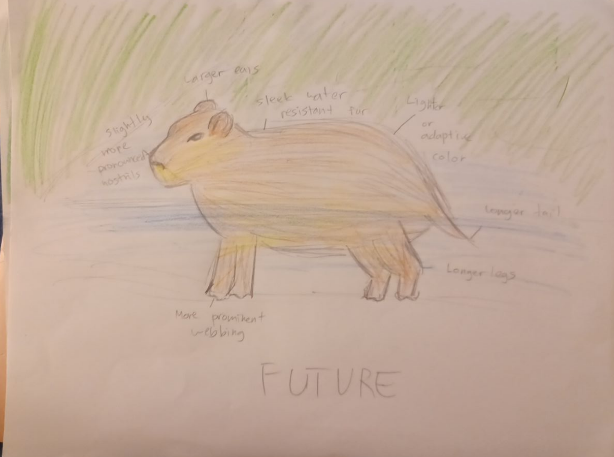The capybara, currently a semi-aquatic mammal thriving in South America’s tropical rainforests and wetlands, may undergo significant adaptations due to climate change. As rising temperatures and sea levels alter its habitat, coastal rainforests may transform into permanent wetlands or shallow marine environments. In the present, the capybara relies on dense vegetation for cover, webbed feet for swimming, and a herbivorous diet of grasses and aquatic plants. In the future, as its habitat becomes more submerged, capybaras may develop elongated limbs and partially webbed fingers for efficient swimming. Their fur could become sleeker for hydrodynamics, and they might evolve salt-filtering adaptations to tolerate brackish water. Additionally, a more amphibious lifestyle may lead to larger nostrils positioned higher on their heads, similar to hippos, allowing them to breathe while mostly submerged. These changes would help capybaras thrive in a world dominated by rising waters.
Contact us
Thank you for your interest in contacting Future Engineers. We look forward to connecting with you!
General Inquiries
support@futureengineers.orgSponsorship Inquiries
sponsor@futureengineers.org

